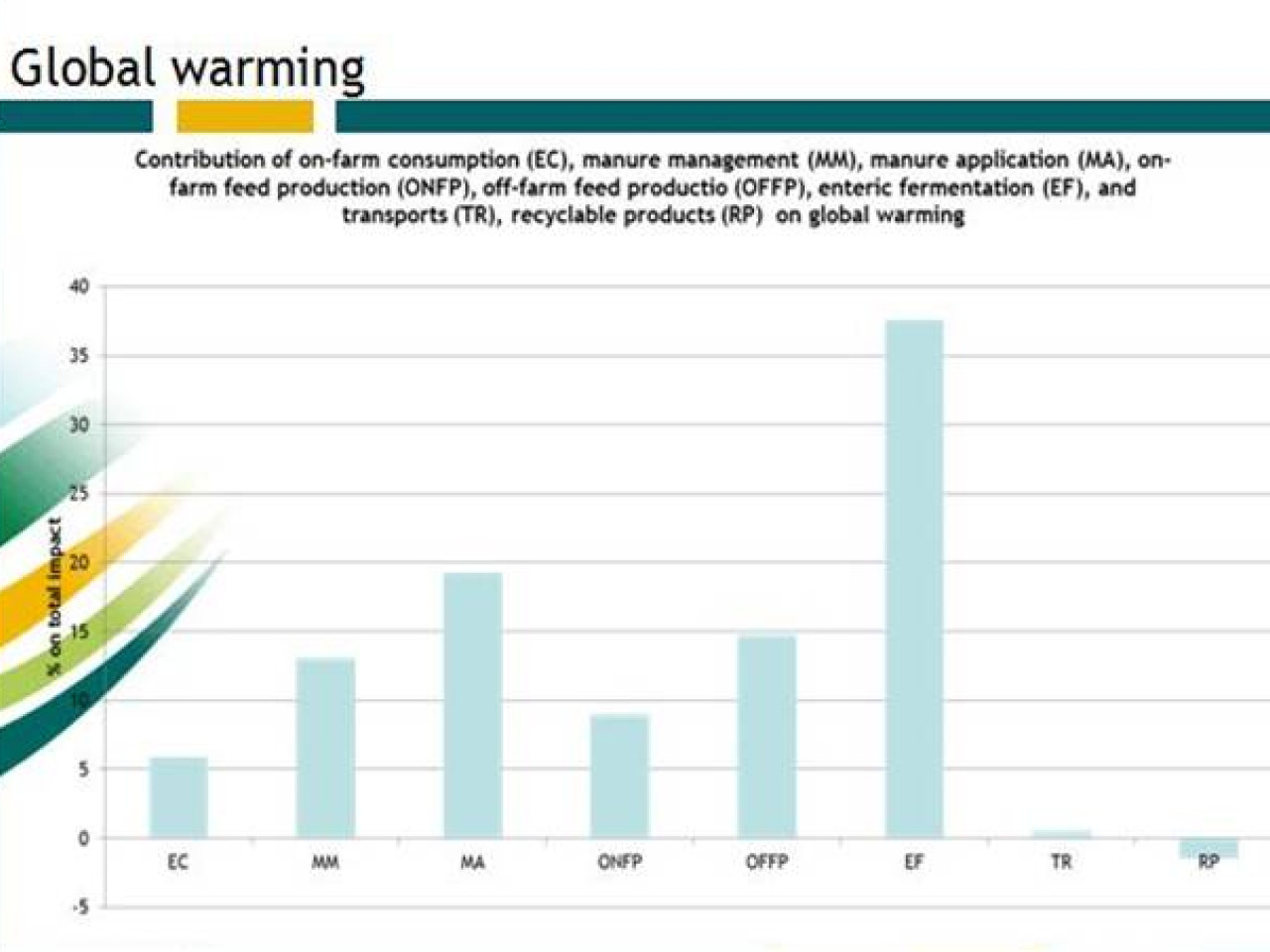The application of the Life Cycle Analysis methodology (LCA) to Italian livestock sectors, enables analyzing the potential environmental impacts arising from farm production systems. The Life Cycle Assessment method has been standardised by ISO Standards 14040 and 14044 series, and allows to calculate the environmental impacts of a product or service throughout its life cycle. LCA applied to the agricultural and livestock sector enables assessing the environmental sustainability of breeding farms, focusing on the system hotspots, as well as assessing and implementing improvement options, in order to improve each farm's environmental performance.
 Example of agrifood product on which the laboratory has performed a life cycle study
Example of agrifood product on which the laboratory has performed a life cycle study
LCA applied to the agricultural and livestock sector allows to assess the environmental sustainability of breeding farms, focusing on system hotspots as well as assessing and implementing improvement options, in order to improve each farm's environmental performance.
The LCA methodology could be applied to other agricultural farms and companies, to the food industry, and more in general to the entire agrifood sector, in order to assess the environmental sustainability of products and companies. In this way each company could assess the critical environmental issues of their production chain and evaluate opportunities for improvement. Furthermore, LCA is the basis for the development of systems and tools to support environmental management such as ecolabels and environmental product declarations.
 Block diagram of the processes considered in the environmental assessment of breeding farms
Block diagram of the processes considered in the environmental assessment of breeding farms
Assessment of the environmental impact of Italian livestock farms
Life Cycle Analysis (LCA) of Italian livestock sectors, with the aim of analysing the potential environmental impacts arising from farm production systems. Jointly with CRA-FLC, the laboratory has implemented LCA analysis of the following livestock sectors: dairy buffaloes (8 farms), pigs (6 farms), dairy cows (9 farms). The boundaries of the system were "from cradle to gate" up to production of raw milk and live weight pigs ready for slaughter. The primary data were collected directly at the involved farms and refer to years 2010-2012. The main critical environmental issues were highlighted for the type of farms analysed: fodder cultivation and manure management, mainly due to the high emissions of nitrogen compounds (N2O, NH3, NO3) from management and use of chemical and organic fertilisers, methane emissions from enteric fermentation and consumption of fuels and electricity.
Council for Research and experimentation in agriculture, Research Centre for fodder and dairy production (CRA-FLC), Companies in the livestock sector, LCA Lab (Spin off ENEA)
Pirlo G., Carè S., Fantin V., Falconi F., Buttol P., Terzano G., Masoni P., Life Cycle Assessment of Mediterranean Buffalo milk, in Proceedings of “LCA Food 2012”, pp. 661-662, 2-4 October 2012, Saint Malo, France. Pirlo G., Carè S., Fantin V., Falconi F., Buttol P., Terzano G., Masoni P., Life Cycle Assessment of the production of one kilogram of milk in six buffalo farms, in Proceedings of “ADSA ASAS Joint Annual Meeting”, 8-12 July 2013, Indianapolis, Indiana, USA.
 Graph showing the contribution to global warming, one of the parameters considered in the product's
Graph showing the contribution to global warming, one of the parameters considered in the product's

